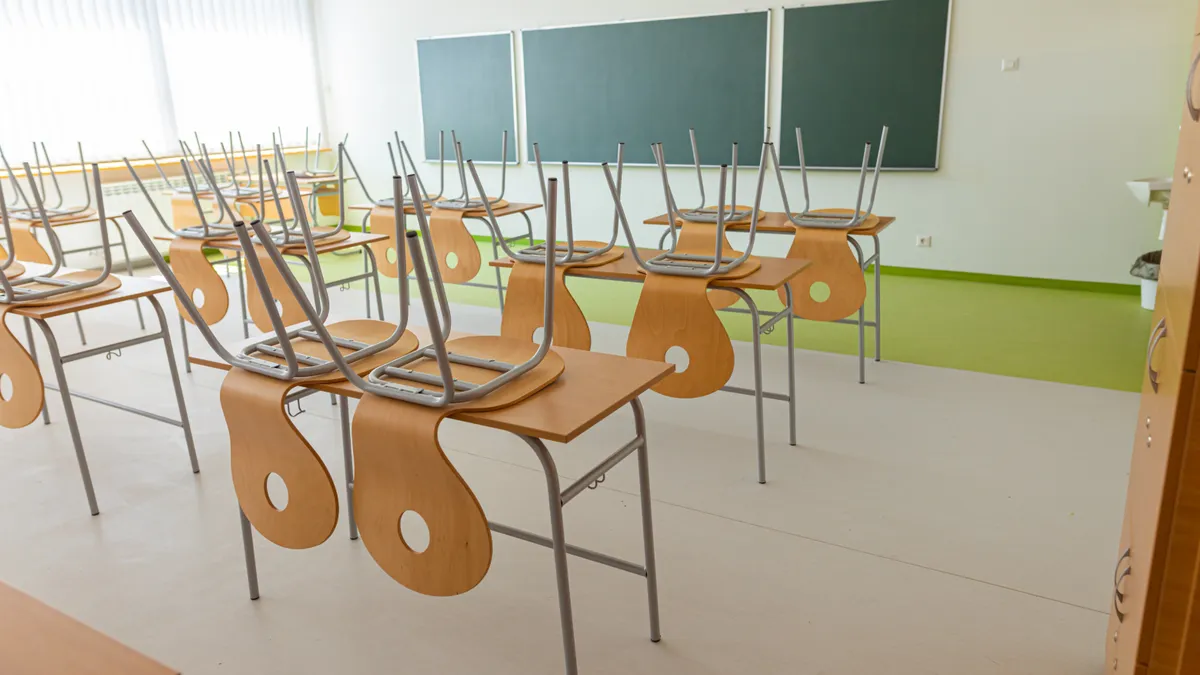Dive Brief:
-
Chronic absenteeism skyrocketed post-pandemic, with 6.5 million more students missing at least 10% or more of school days in the 2021-22 year than 2017-18 — meaning 14.7 million students were chronically absent even after schools began to reopen post-pandemic closures.
-
Before the pandemic, a quarter of all enrolled students attended schools experiencing high or extreme absenteeism. Yet the analysis found that percentage more than doubled to 66% of students attending schools with high or extreme chronic absenteeism in 2021-22.
-
In a glimmer of hope, preliminary data from 11 states shows that while chronic absenteeism rates remained relatively elevated in 2022-23, they decreased slightly — by 2% — from the high levels of 2021-22, according to a separate analysis published by Attendance Works.
Dive Insight:
Attendance Works, an organization that advocates for improved attendance policies and practices, analyzed new U.S. Department of Education data to determine national absenteeism levels in 2021-22. The organization's additional data aggregation from 11 states for the 2022-23 school year suggests schools continue to grapple with high chronic absenteeism reflected in the national data.
Hedy Chang, executive director of the organization, told K-12 Dive it could take at least three to four years to return to pre-pandemic levels of attendance. "It's really about supporting kids over time," she said.
The severity of chronic absenteeism and time needed for its recovery can also vary by school cohort. Students who were transitioning between early, elementary and secondary education at the time of school closures could be more acutely impacted by absenteeism and take longer to bounce back, said Chang.
Attendance and education research experts have long suspected the pandemic impacted chronic absenteeism levels as well as academics. And these hunches have been backed up by preliminary polling and anecdotal evidence.
For example, in nationally representative school survey data from the U.S. Department of Education released last year, nearly half of schools reported student chronic absenteeism had "increased a lot" from before the pandemic.
And earlier this year, Attendance Works estimated chronic absenteeism will have increased twofold since the pandemic began, to roughly 16 million students.
While the new data falls shy of that number, it confirms theories that COVID-19 exacerbated attendance problems. The organization called the increase "an unprecedented wave of chronic absenteeism" in a blog post accompanying its data analysis release on Thursday.
Being absent from school and the resulting minimized contact with peers can impact both academics and social-emotional well-being of students.
Last month, the National Center for Education Statistics, which administers the National Assessment for Educational Progress, said increased student absenteeism post-pandemic is linked to declines in 2022 scores. More students from all genders, races and school types reported being absent five days or more in the month preceding that exam, which showed declines in both math and reading.
The White House concluded that absences in the 2021-22 school year were large enough that they "could be a substantial contributor" to the drop in academic performance on NAEP. As a result, the White House called for an "all-hands-on-deck response" to tackle the nationwide challenge facing schools.
"Such high numbers of chronically absent students are beyond the capacity of a single social worker or counselor to address," echoed Attendance Works in its Thursday analysis. "Unaccustomed to such significant numbers, many schools may not have had in place an effective tiered approach to improving attendance."
The organization suggested, among other solutions, focusing on:
- Creating healthy learning environments.
- Cultivating a sense of belonging among students.
- Offering relevant and engaging learning experiences.
- Providing opportunities for students to catch up on their academics.
- Addressing staff shortages and health.
- Leveraging community partners to support students, like community schools.
"There is good news: We don’t have to start from scratch," said Attendance Works in Thursday's blog post. "We can build upon what has been learned about effective responses to chronic absenteeism over the past decade or more.”








 Dive Awards
Dive Awards





